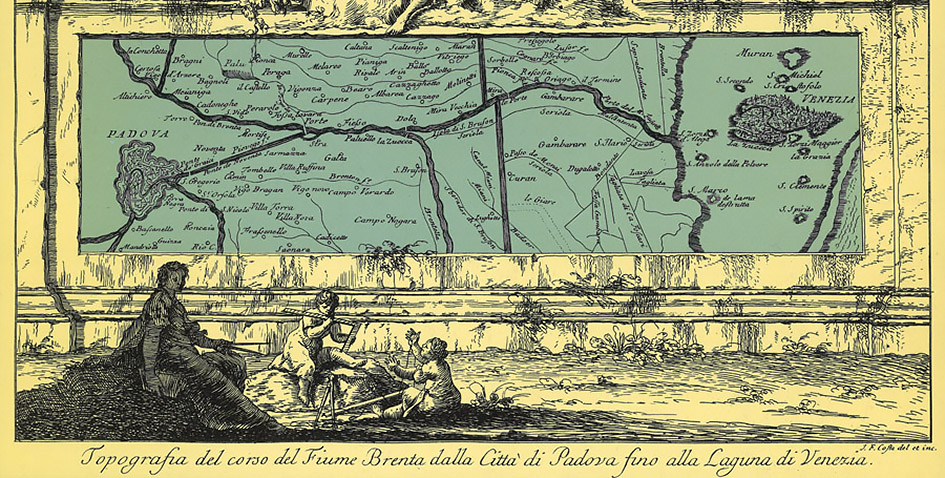 “The banks on both sides of this river are all full of palaces and of the delightful houses of the noble families, and of the richest citizens, with orchards, gardens, well-populated villages to such an extent that those who sail it have the impression of travelling inside a town all along its 16-mile long course that almost forms an uninterrupted Village, which links the Metropolis of that State with the city of Padua”
“The banks on both sides of this river are all full of palaces and of the delightful houses of the noble families, and of the richest citizens, with orchards, gardens, well-populated villages to such an extent that those who sail it have the impression of travelling inside a town all along its 16-mile long course that almost forms an uninterrupted Village, which links the Metropolis of that State with the city of Padua”
(Vincenzo Coronelli, 1697)
 In 1574 the Brenta waterway, from Venice to the Portello in Padua, was sailed by a procession of boats that accompanied Henry III King of France on his way back from Poland; the King was fascinated.
In 1574 the Brenta waterway, from Venice to the Portello in Padua, was sailed by a procession of boats that accompanied Henry III King of France on his way back from Poland; the King was fascinated.
Thomas Coryat, an English traveller and writer, was favourably struck by the beauties of the Riviera.
 In September 1728 Montesquieu gets to Venice and sails on the Burchiello: “On the Brenta, a river turned a canal by means of four locks; and so just one horse pulls a rather large boat and twenty-five miles are covered in eight hours. Along the Brenta are beautiful patrician dwellings. Nobleman Pisani has started one that will be extraordinarily superb…”.
In September 1728 Montesquieu gets to Venice and sails on the Burchiello: “On the Brenta, a river turned a canal by means of four locks; and so just one horse pulls a rather large boat and twenty-five miles are covered in eight hours. Along the Brenta are beautiful patrician dwellings. Nobleman Pisani has started one that will be extraordinarily superb…”.
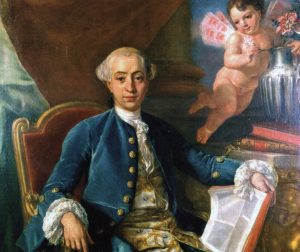 In his “Story of my life”, Giacomo Casanova tells of his experience on the Burchiello in 1734 together with Baffo, a famous erotic poet from Venice.
In his “Story of my life”, Giacomo Casanova tells of his experience on the Burchiello in 1734 together with Baffo, a famous erotic poet from Venice.
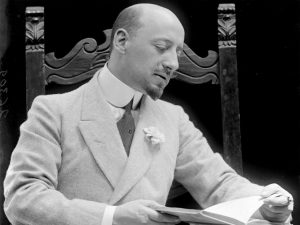 In “The Flame of Life”, Gabriele D’Annunzio writes: “A river once magnificent and glorious in the sonnets of gallant abbots, when thanks to its current the burchiellos descended the canal, full of music and pleasures”.
In “The Flame of Life”, Gabriele D’Annunzio writes: “A river once magnificent and glorious in the sonnets of gallant abbots, when thanks to its current the burchiellos descended the canal, full of music and pleasures”.
On April 17, 1345 the High Council of the Republic of Venice repealed an act that prohibited the citizens of the Serene Republic to purchase land on the mainland; thus some interests of the noble families of the Veneto moved from trade to the inland and to the banks of the Brenta.
The opportunity to more extensively exploit the lands owned inland posed the issue about a closer control of production; this is why country residences were built, to meet the new needs and unite, in a single complex, the Lord’s dwelling and the service buildings.
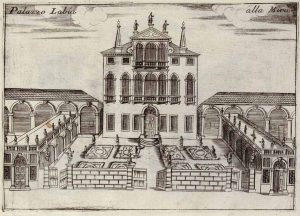 Various types of villa were erected:
Various types of villa were erected:
– the farm-villa for those who had found a new source of wealth in agriculture;
– the temple-villa, a meeting place for artists and the intellectuals;
– the palace-villa, a representative building to host huge parties and banquets;
– or even sumptuous dwellings, designed by famous architects, decorated and frescoed by sublime painters, to bear witness to a season of splendours.
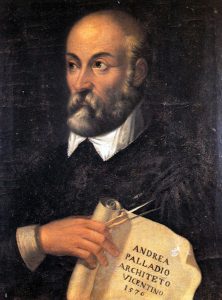 Great architects like Palladio, Scamozzi, and Frigimelica created summer residences for the Venetian aristocrats who spent their “vacation” on the mainland, in a true Arcady of Ladies and Squires who played, sang, experienced loves and told tales.
Great architects like Palladio, Scamozzi, and Frigimelica created summer residences for the Venetian aristocrats who spent their “vacation” on the mainland, in a true Arcady of Ladies and Squires who played, sang, experienced loves and told tales.
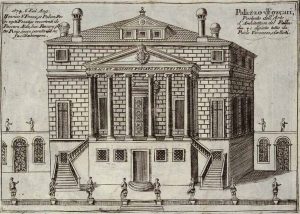 The “Venetian Villa” generated the trend of “villeggiatura” (literally, spending the holiday in a villa), which appeared in the Veneto between the 15th and the 16th century and continued in the two following centuries, until the glorious Republic of Venice fell in 1797. It was to this aim that nearly 2000 villas were built in this region, which still bears witness to century-old culture in architecture.
The “Venetian Villa” generated the trend of “villeggiatura” (literally, spending the holiday in a villa), which appeared in the Veneto between the 15th and the 16th century and continued in the two following centuries, until the glorious Republic of Venice fell in 1797. It was to this aim that nearly 2000 villas were built in this region, which still bears witness to century-old culture in architecture.
From the 16th century, the waterways and the rivers that could be easily reached from Venice were dotted with sumptuous summer residences.
The Brenta Canal, which connected Venice to Padua together with more waterways, was the trendy waterway, a place of delights and the ideal continuation of the Grand Canal in Venice. Here over seventy luxury villas flourished.
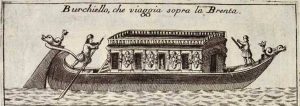 In this place that was not too far from the city, the richest noble families spent their vacations. They sailed from Venice on comfortable barges called Burchiello, which went up the navigable canal of the Brenta; these barges were pushed by oars from St. Mark’s through the lagoon up to Fusina, wherefrom they were pulled by horses to Padua, along the Riviera del Brenta.
In this place that was not too far from the city, the richest noble families spent their vacations. They sailed from Venice on comfortable barges called Burchiello, which went up the navigable canal of the Brenta; these barges were pushed by oars from St. Mark’s through the lagoon up to Fusina, wherefrom they were pulled by horses to Padua, along the Riviera del Brenta.
The Burchiello was a typical Venetian barge finely wrought and decorated, used to transport passengers and equipped with a wide wooden cabin and three or four balconies; it was used only by the wealthiest classes of Venice to reach the city from their villas in the countryside.
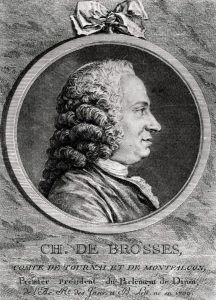 The Venetian aristocrats conveyed the elegance, the refinement and the luxury that were typical of the city of Venice on the Burchiello, too.
The Venetian aristocrats conveyed the elegance, the refinement and the luxury that were typical of the city of Venice on the Burchiello, too.
Of the many descriptions of this barge we would mention the most complete, written by Charles de Brosses when telling of his travel to Italy (1739): “The nicest offspring in the world, very much alike our water coaches but more beautiful, and infinitely cleaner and more elegant, with a small lobby for the servants, a cabin upholstered with Venetian brocatel, a table, and two corridors decorated in morocco leather, taking light from eight real windows and two glass doors. We found our accommodation so pleasant and comfortable that, contrarily to what we usually felt, we were not in a hurry at all to get to our destination, even more so since we had a lot of food, and wine from the Canary islands. …”.
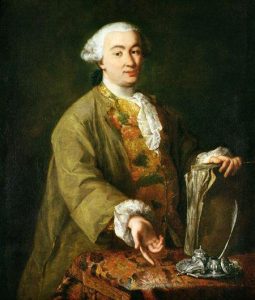 The Burchiello becomes a sort of small stage where the most diverse social classes mix. Goldoni observes them all while“I was on the boat from Padua, that is on the Burchiello that sails the Brenta every morning” and then he adds: “Large was the crowd of varied people, they were all seated orderly; there were polite persons, ordinary persons: a mix of different characters”.
The Burchiello becomes a sort of small stage where the most diverse social classes mix. Goldoni observes them all while“I was on the boat from Padua, that is on the Burchiello that sails the Brenta every morning” and then he adds: “Large was the crowd of varied people, they were all seated orderly; there were polite persons, ordinary persons: a mix of different characters”.
Some years later, in 1760, he feels the need to point out: “I’m referring to the one that can be rented to cover the distance to Padua every morning; and not of the large Barcaccia that sails at night”.
“Of that graceful Waterway decorated with mirrors, and engravings, and paintings, which moves forward by one mile every twenty minutes as a good tow pulled by horses”
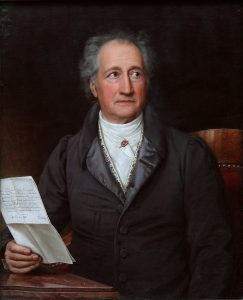 In 1786 Goethe arrives in Padua, visits the Botanic Garden and sees the palm that still bears his name, and then he sails on the Burchiello: “The trip on the Brenta with the Burchiello, a public means of transport, and with a very respectable company (Italians stand on ceremony among themselves, too) is nice and pleasant”.
In 1786 Goethe arrives in Padua, visits the Botanic Garden and sees the palm that still bears his name, and then he sails on the Burchiello: “The trip on the Brenta with the Burchiello, a public means of transport, and with a very respectable company (Italians stand on ceremony among themselves, too) is nice and pleasant”.
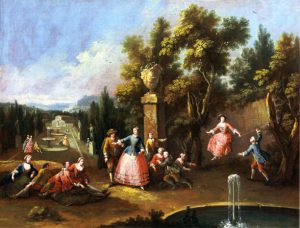 It was the time of excitement for vacation during which, as Goldoni writes, “everybody enjoys immense freedom, plays cards, eats, and organizes dancing parties and shows”.
It was the time of excitement for vacation during which, as Goldoni writes, “everybody enjoys immense freedom, plays cards, eats, and organizes dancing parties and shows”.
The journey was fascinating and amusing; in the slow progress amidst villas and weeping willows, Ladies and gallant men, aristocrats and adventurers, actors and artists livened up the life on board, making the trip on the boat picturesque and pleasant.
Moreover at the times of vacation people used to go from one villa to another, with happy companies moving from one party to another.
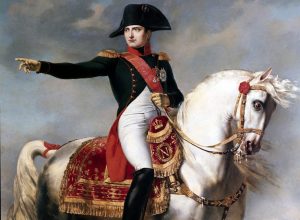 Towards the end of the 18th century, with the fall of the Venice Republic caused by Napoleon, the discomforts of the dolce vita in Venice had repercussions on the inland; the number of passengers and of trips diminished, until the service with the Burchiello came to an end.
Towards the end of the 18th century, with the fall of the Venice Republic caused by Napoleon, the discomforts of the dolce vita in Venice had repercussions on the inland; the number of passengers and of trips diminished, until the service with the Burchiello came to an end.
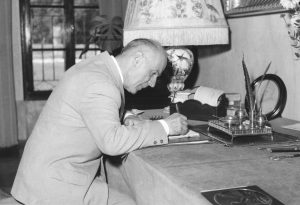 150 years later, in 1960, it was rediscovered and proposed as a route for tourism by the Tourist Board of Padua that was then chaired by Francesco Zambon. A white steamboat from the First World War – which had transported the victorious Bersaglieri in Trieste – was used to that purpose.
150 years later, in 1960, it was rediscovered and proposed as a route for tourism by the Tourist Board of Padua that was then chaired by Francesco Zambon. A white steamboat from the First World War – which had transported the victorious Bersaglieri in Trieste – was used to that purpose.
The scheduled service of the Burchiello was officially opened in 1960 by the then President of the Italian Republic Antonio Segni, and it saw a remarkable increase in the number of passengers.
 In the 1970’s the Padua Tourist Board entrusted the Burchiello service to Siamic, the historical coach company of Padua, which managed it through its subsidiary Siamic Express that renovated and redeveloped the service, and promoted it on the international scene.
In the 1970’s the Padua Tourist Board entrusted the Burchiello service to Siamic, the historical coach company of Padua, which managed it through its subsidiary Siamic Express that renovated and redeveloped the service, and promoted it on the international scene.
At the beginning of the 1990’s Sita, the new managing company of the Padua bus service, took over until the time when the scheduled service of the Burchiello was taken over by the Padua-based tourist group Antoniana.it, which had already been operating on the tourist navigation route from Padua to Venice for twenty years under the “Battelli del Brenta” brand.
As it used to do in the past the Burchiello – now a long-distance touring service – still sails the Riviera del Brenta from Padua to Venice, and back; the heir of old traditions, it slowly cruises the Brenta waters while tourist guides on board tell about the history, the culture and the art of the Villas that rise along the canal.
The mini-cruises run all days but on Mondays, March to October, and start in Venice (on Tuesdays, Thursdays and Saturdays) or from Padua (on Wednesdays, Fridays and Sundays); they stop at the most beautiful and famous villas linked to illustrious names like Palladio and Tiepolo, for a guided tour inside the villas.
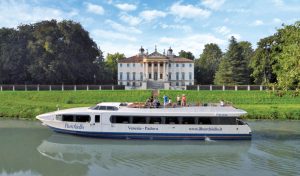 Today the Burchiello® is a modern and comfortable motorship, equipped with a cabin and comfortable sofas, air-conditioning, a bar and toilets, and a panoramic deck that offers passengers a full view of the surroundings.
Today the Burchiello® is a modern and comfortable motorship, equipped with a cabin and comfortable sofas, air-conditioning, a bar and toilets, and a panoramic deck that offers passengers a full view of the surroundings.
This charming mini-cruise passes past nine swivelling bridges and five locks, true “water lifts” that enable tourists to go down or up the difference in water level that is as high as 10 meters from Padua to Venice, and for those leaving from Padua it concludes its trip in Venice in the fantastic marble scenario of St. Mark’s Basin.




